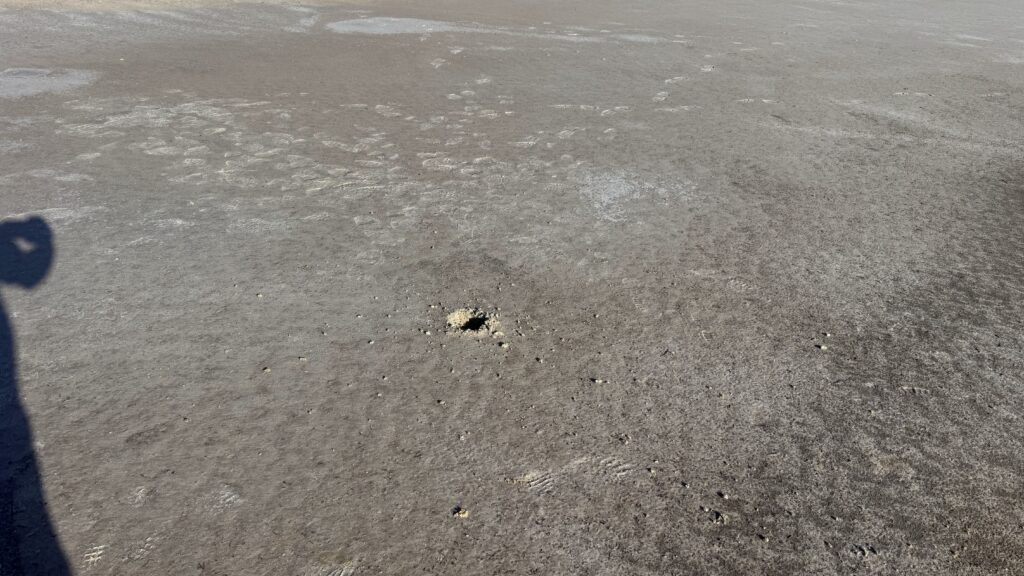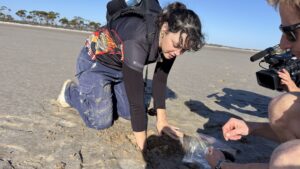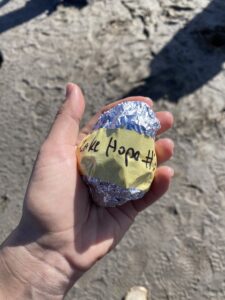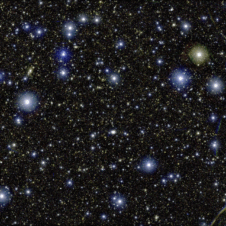A dazzling meteor which lit up Western Australian skies on Mother’s Day this year was the spark for Curtin University’s Desert Fireball Network (DFN) to embark on an exciting journey deep into the Australian Outback, to discover where the space rock landed – and where it may have come from.
The DFN, supported by the International Centre for Radio Astronomy Research (ICRAR) and Curtin’s Space Science and Technology Centre within the School of Earth and Planetary Sciences, used high-tech weather modelling and its network of cameras to calculate where the meteorite crash-landed onto Earth’s surface.
The team tracked the meteorite to the Wheatbelt region of WA, into the remote salt flats of Lake Hope, 530km east of Perth on Ngadju boodja.

The meteorite crater in the Lake Hope salt flat. Credit: Curtin University
That sparked an adventure requiring hundreds of kilometres behind the wheel, hours of off-road four-wheel-driving, and a night spent camping under the stars.
A final seven-kilometre trek by foot across Lake Hope finally brought the researchers to the impact zone, where DFN team member Mia Walker made the big discovery, the impact clearly visible on the stark white of the Salt Lake.
“It was so amazing to be the first person to ever touch it,” she said.

Mia Walker retrieves the meteorite. Credit: Curtin University
“This piece of rock is older than the Earth and was in space just a few days ago.”
The team soon discovered a second fragment not far from the first.
DFN Science Lead Dr Hadrien Devillepoix said the find included the team’s biggest piece of space rock to date – and warned they were lucky to find anything at all.
“It was a close call because there was rain forecast, so the lake could have been covered in water in a couple of days and the meteorite fragments might have been lost forever,” Dr Devillepoix said.
“This is such an exciting find. These pieces of space rock have been travelling the solar system for 4.5 billion years and now we can use them for science.”
DFN Director Dr Ellie Sansom said meteorite falls such as this are valuable for researchers, as they can match the rock type to its origins in the solar system by calculating the impacting orbit.”

The recovered Lake Hope meteorite fragment. Credit: Curtin University.
“There are only about 60 meteorites globally that we have orbital information for; this is the 10th in Australia, tracked and recovered by the DFN”, Dr Sansom said.
“This meteorite comes from a particularly interesting orbit and it’s invaluable to have retrieved as much of it as we have.
“One of the fragments is now on display at the WA Museum Boola Bardip, so it will be exciting for those that witnessed the fireball themselves to check out the space rock that caused such a display.”
The museum exhibition will coincide with Curtin hosting 300 meteorite experts from across the world for the 2025 Meteoroids conference and the International Meteoritical Society’s annual meeting, serving as a display of Australian expertise and success in the field.
The team are currently analysing the samples to determine their composition.
Preliminary findings from measurements made at Monash University indicate the rock is an LL ordinary chondrite, a somewhat rare type of meteorite similar to one which fell over Russia in 2013, that generated a shockwave causing more than $50 million in property damages.
Given the similarities in orbit, this may be a step closer to understanding where these types of asteroids are located.

